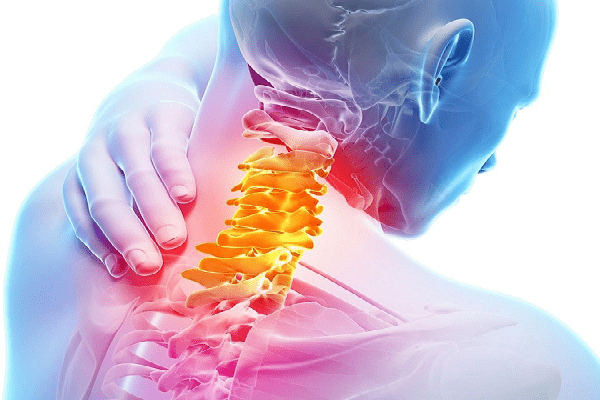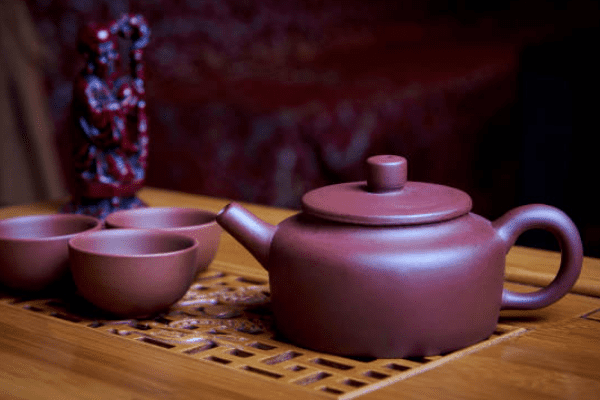Therapeutic exercises >>>> Exercises for the restoration of muscles and ligaments of the cervical spine
Exercises for the restoration of muscles and ligaments of the cervical spine.

To damage the muscles and / or ligaments of the cervical spine, it is enough to turn the head too sharply. A more complex injury to the muscles and ligaments in the neck (overstretching of muscles and tendons) can occur due to the prolapse of the capsule of the cervical vertebra and prolonged tilt of the head as a result of the inability to keep it on the spinal column. But there are also severe injuries of the spinal column, in which tears of the ligaments and muscle fibers in the neck area are possible (for example, after accidents, unsuccessful falls, sudden head throwbacks). Prolonged immobility of muscles in the cervical region due to wearing an orthopedic collar can also cause muscle injury, but of a different nature - a sharp contraction of the fibers of the muscle corset.
Any kind of injury to muscle tissue and ligamentous apparatus of the cervical spine requires recovery procedures as soon as possible after the injury has healed. And for these purposes, exercises are needed that load the musculo-ligamentous apparatus of the cervical spine.
Exercises are started after removing the traction device (if any) and after the tissue has healed. Part of the exercises for the restoration of muscles and tendons of the cervical spine begin to be carried out while wearing an orthopedic collar - these exercises relate to the work of the shoulder girdle. Since the musculoskeletal system of the cervical spine is directly connected with the muscular corset of the shoulder girdle, some of the exercises involve the muscles of the shoulder and forearm.
Exercise 1. In a standing position, feet shoulder-width apart, spread your arms to the sides parallel to the floor, slowly lower and slowly raise 10 times in three passes.
Exercise 2. In a standing position, feet shoulder-width apart, arms lowered and extended along the body. Raise one hand parallel to the floor and turn your head towards the raised hand, return to the starting position. Raise the other hand, stretching it parallel to the floor, turn your head towards the raised hand, return to its original position. Repeat the exercise 10 times in three rounds.
Exercise 3. In a standing position, feet shoulder-width apart, spread your arms to the sides and imitate the movements of the arms of the swimmer (without turning the head to the sides). Repeat 10 times in three passes.
Exercise 4. In a standing position, feet shoulder-width apart, imitate hand swings as in swimming, but with the head turns towards the rising arm. Alternate turns of the head synchronously with the raising of the right and left arms.
Exercise 5. In a standing position, feet shoulder-width apart, rest your hands on your sides and raise your shoulders at the same time (trying to pull your head into your shoulders). Repeat 10 times in three passes.
Exercise 6. In a standing position, feet shoulder-width apart, rest your hands on your sides and raise either the right or the left shoulder alternately, turning the head towards the raised shoulder.
After removing the immobilization collar, the following set of rehabilitation exercises should be performed.
Exercise 7. In a standing position, raise both hands up, bring them behind the head, bending at the elbows and try to reach the spine with the hands as low as possible by lowering the hands along the spine.
Exercise 8. In a standing or sitting position, put each hand on the corresponding shoulder and carry out rotational movements in the shoulder synchronously back and forth alternately. Repeat the exercise 15-20 times in three to four rounds.
Exercise 9. In a standing or sitting position, putting the hand of each hand on the corresponding shoulder, make circular movements in the shoulder alternately with one or one or the other hand.
Exercise 10. In a standing or sitting position, lower your chin, trying to press it as close to your chest as possible. Perform the exercise at a slow pace 20 times in three sets.
Exercise 11. Alternate the previous exercise with turning the head to the side (left and right with the chin lowered to the chest).
Exercise 12. In a standing position with arms lowered along the body, mentally concentrate on the top of your head and try to stretch your head up, stretch your head toward the ceiling, without raising your shoulders. Repeat the exercise 5 times in three rounds.
Exercise 13. In a standing or sitting position, put your palms behind your head, put on the back of your head and straining the muscles of the occipital part of the head and neck, press on your palms, exerting resistance with effort, as if you wanted to bend your head forward with your own hands and yourself at the same time resisted. Repeat the exercise 10 times in three or four rounds.
Exercise 14. In a standing or sitting position, put your palm on your cheek and temporal part of the head and, pressing your head on the palm, try to resist, as if you wanted to bend your head to the side and hindered yourself in this.
Exercise 15. Lie on your stomach with your face down, raise your head and partially your shoulder girdle, trying to look into the distance, throw your head back slightly. Lower your head face down to the starting position. Repeat the exercise 10 times in three to four rounds. This is how the muscle of the occipital part of the head and the muscles of the cervical spine are trained.
Exercise 16. (increased difficulty - performed when all postoperative tissue injuries have healed completely) Lie with your back on a flat surface, arms extended along the body, legs together or shoulder-width apart for support. Raise your head and shoulder girdle and freeze in this position for a few seconds (as long as possible, counting seconds, in order to know the duration of the previous and subsequent exercises). The angle between the surface and the raised head (neck and shoulder girdle) should be sharp. In the process of this exercise, the muscles of the cervical region are noticeably tense. Keep counting as far as possible, starting from one or two to 10 seconds, and then from ten to one hundred seconds), repeat the exercise in three rounds.
All exercises are performed at a slow pace, regularly and daily. They allow to restore the function of muscles and tendons of the cervical spine after injury.
Exercises for the restoration of muscles and ligaments of the cervical spine are aimed at restoring trophism of tissues (blood circulation, to stimulate regeneration processes in muscle and connective tissue, to strengthen the muscles of the cervical spine, taking into account future loads). The same exercises, loading the muscles of the cervical spine, are carried out for a preventive purpose, strengthening the muscular corset of the neck in advance.

Read

Read


























